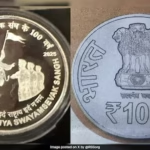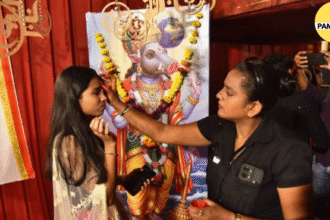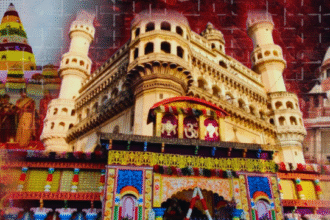For centuries, the Taj Mahal has been glorified as Shah Jahan’s eternal tribute to his wife Mumtaz Mahal, hailed as a marvel of Mughal architecture and a monument of love.
But what if the story isn’t that simple? What if, as some argue, the Taj Mahal was once a grand Hindu temple of Lord Shiva, known as Tejo Mahalaya—later repurposed by Shah Jahan into a mausoleum?
This debate has returned to the spotlight with the upcoming Bollywood film The Taj Story, starring Paresh Rawal.
The Spark: Paresh Rawal’s Motion Poster
On September 29, 2025, Paresh Rawal shared a motion poster of The Taj Story. The poster showed a Shiva idol emerging from the Taj Mahal’s dome, with the caption:“What if everything you’ve been taught is a lie? The truth isn’t just hidden; it’s being judged. Unveil the facts with #TheTajStory.”
This instantly triggered a storm online. Accusations poured in that Rawal was “playing with religion.”
The outrage is ironic, considering the same critics who defended controversial films like Padmavati in the name of creative freedom, are now aggressively protesting Rawal’s film without even watching it.
Backlash and reactions
Film writer Daroob Farooqui tweeted:“India is going through its worst phase. The Sanghis are making India a laughing stock. This is the level of monkey-level stupidity.”
The frustration is clear—because until now, narrative-shaping through selective history was largely one-sided. With a counter-argument now being visualized through cinema, the reaction has shifted from intellectual debate to outright dismissal.
Journalist Maria Khan wrote: “From Baburao to BJP’s clown—Paresh Rawal has proved you can survive in Bollywood for decades and still die as a cheap Sanghi meme.”
Notice the language? Critics who usually preach about “democracy, dissent, and dialogue” instantly resorted to personal abuse when confronted with a narrative they dislike.
Self-styled historian Ruchika Sharma added: “Sad that a film is being made on the false Tejo Mahalaya myth, which has no historical evidence.”
But as critics point out, her “credentials” as a historian are themselves questionable.
Other netizens labeled the film:
- “Propaganda to divide Hindus and Muslims.”
- “A conspiracy theory packaged as cinema.”
One user mocked Rawal’s past comment on cow urine:
“This is why you shouldn’t drink cow urine—it makes you mentally ill.”
Paresh Rawal’s Clarification
After the backlash, Rawal deleted his original post and issued a disclaimer:
“The film The Taj Story is not about religion. It does not claim there is a Shiva temple inside the Taj Mahal. It only presents historical facts. Please watch and form your own opinion.”
The film releases on October 31, 2025, but the storm has already begun.
Where Did the Tejo Mahalaya Theory Come From?
The roots of this claim lie in Purushottam Nagesh Oak (1917–2007), a revisionist writer and founder of the “Institute for Rewriting Indian History.”
- In 1989, Oak published Taj Mahal: The True Story, arguing the monument was built in 1155 AD by Chandela ruler Raja Paramardi Dev, dedicated to Lord Shiva as “Tejo Mahalaya” (Palace of Light).
- Oak claimed it was seized by Shah Jahan after Mumtaz’s death, idols were removed, and Islamic calligraphy was added.
- He even alleged that Shah Jahan used the site to hide looted wealth, promoting the mausoleum narrative as a cover.
- Oak filed a Supreme Court petition in 2000, but it was dismissed as a “whimsical obsession.”
Despite scholarly rejection, Oak’s theory spread through books, emails, WhatsApp forwards, and social media.
Claims Made by Proponents
Supporters, including right-wing groups, cite several arguments:
- Etymology: “Taj Mahal” is a distortion of “Tejo Mahalaya.” “Tejo” represents Shiva’s fiery lingam.
- Architecture: Octagonal shape, lotus motifs, trishul-like spires, swastika patterns, sealed doors—all said to resemble Hindu temples.
- Historical Records: Badshahnama mentions acquiring a “mansion” from Jai Singh. Aurangzeb’s 1652 letter mentions leaks—implying old construction.
- Symbolism: Located on Yamuna’s banks (sacred for temples), central dome as “Shiva’s crown,” cobra motifs representing Naga.
Counter-Evidence by Historians
Mainstream historians and the Archaeological Survey of India (ASI) have repeatedly debunked these claims:
- Timeline: Mughal records confirm construction between 1632–1653 with 20,000 workers. European travelers like Tavernier witnessed it. Carbon-dating supports 17th-century origin.
- Architecture: Onion domes, iwans, charbagh gardens—clearly Indo-Islamic, not Hindu temple style. Lotus motifs were Mughal adaptations, not proof of Hindu origin.
- Records: Over 1,000 Quranic inscriptions date to Shah Jahan’s time. Badshahnama’s “mansion” was a smaller palace, not a grand temple.
- Government & Courts: ASI affidavits (2015–2022) confirm “no temple evidence.” Courts dismissed petitions as “concocted stories.”
Political and Social Impact
The Tejo Mahalaya narrative ties into broader Hindutva politics of reclaiming Hindu heritage, similar to disputes at Gyanvapi or Mathura’s Krishna Janmabhoomi.
- BJP leaders like Vinay Katiyar (2017) and Laxmikant Bajpai (2014) amplified the claim.
- Petitions in courts surged in the 2010s, including demands to allow Hindu rituals at the Taj.
- ABHM members attempted a jal abhishek in 2024, leading to arrests.
Historians warn it risks damaging the Taj Mahal’s UNESCO World Heritage status as a global symbol of Indo-Islamic art.






